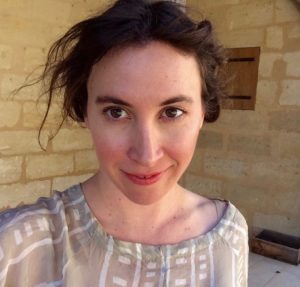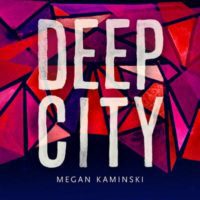It’s coincidence that my reading of Megan Kaminski’s Deep City overlaps with what would have been the 110th birthday of the renowned chronicler of cities, Jane Jacobs. Often criticized by the establishment of urban planning for her lack of formal education in the field, Jacobs fundamentally changed the way we think about the urban experience by refusing to view cities as separate from their inhabitants. This central understanding of the city as not totally inanimate, not totally human, but some kind of hybrid, runs throughout Kaminski’s Deep City, a book that dwells deeply in the urban landscape.
So deeply that the cities examined in Kaminski’s poems go beyond the flânerie of the New York School and seem to be almost entirely disconnected from the human self. Whereas we instantly recognize New York as the backdrop, the protagonist, and often the true beloved of a poet such as Frank O’Hara, Kaminiski’s cities push beyond subject—seeming to break through as the speaker of the poems themselves. Decentralizing and deconstructing the familiar notion of single speaker in the landscape, Kaminski both challenges the Romantic ideal of pastoral poetry and enlivens the concrete and girders we live in but so often fail to imagine.
We begin moving though this place, familiar but unknown, the collection opening “Dear cabbie, dear comfort / perchance could you drive faster.” The little tic, “perchance,” that little shadow of a Victorian, almost Dickensian diction is a constant in Deep City, a nagging ear worm wily enough to disorient the sense of the singular “modern city.” Our sense of time is further rattled by poems stretching their reach even further back, images pulling us into a sense of geological time, with their “garnets sweet sodalite veins,” “ruby depths” and “stories patterned from earth and stone.” Echoing George Oppen’s “pure joy / Of the mineral fact,” Kaminski is thorough in destabilizing our notions of what a city is or ever was, all the while presenting urban minutiae in an unflinching catalogue of detail.
The glimpses we get of the city—“bodegas brick walls wrought iron”—never settle into a single comfortable composite; instead they refract any sense of geographic certainty. Kaminski’s use of fracture is less an embodiment of the fractured urban self, and instead an intensely flat, visual gesture. This can be seen in the split forms of “collection,” the book’s third and final section:

The poetic form at work here functions, in essence, as the liner notes to each visual moment, a laundry list of what is within view.
Kaminski suspends us between our cities and their uncanny doppelgangers, a move that often feels like a suspension between the human and city itself. We are never sure of a solid location—no specific geographies—and yet these landscapes are intensely familiar. In this way, Kaminski creates an urban reading of Donna Haraway’s A Cyborg Manifesto, blurring what it means to be both human and city:
the city I lost last year
_____(stuff its corpse with steel wool
_____charred tissue mechanical entrails)
promise to bring back the remnants
rosaries of fingers and toes
Throughout, pieces of language recur to anchor us—the address of “dear,” an inscription of voice that serves to complicate the attempt to empty out the self and focus outwardly, is tautly challenged by the repetition of “name me… name me,” a constant cry from the city in its unmoving mass of concrete to define what it means to be there. While this echoing plea might become lost in the intense visual breadth of Deep City’s poems, Kaminski architects a sneakily biting refrain from it’s first instance: “Name me perception / name me economy.” Through this lens of anonymity and a seemingly contradictory desire to be named, the city is always shifting amorphously, and we are uncertain of what or who is the commodity at stake in these poems.

Much like Dziga Vertov’s Man With A Movie Camera, the city observed in Deep City hurtles towards inevitable anthropomorphism. We strain to read ourselves into the city, to understand how we have wrought it:
city built line on line body on body
alphabet buried beneath street
concrete-riverbed-city
cross-sectioned-fluid-fattened
Notably, what is not within view is the human eye purveying. There is something deliciously disturbing about a poetics that truly empties out the “I” as Kaminski does here, not in an attempt to feel the shape of the self in its absence, but in an earnest attempt to write the space so many of us live in. Ultimately, this attempt must fail: The city is not isolated as an object or artifact to behold because, despite the urge to look, the observer cannot be separated from the urban landscape. Both are complicit, and complicated, by this ongoing symbiosis, an experience that Deep City traces boldly and delicately.




